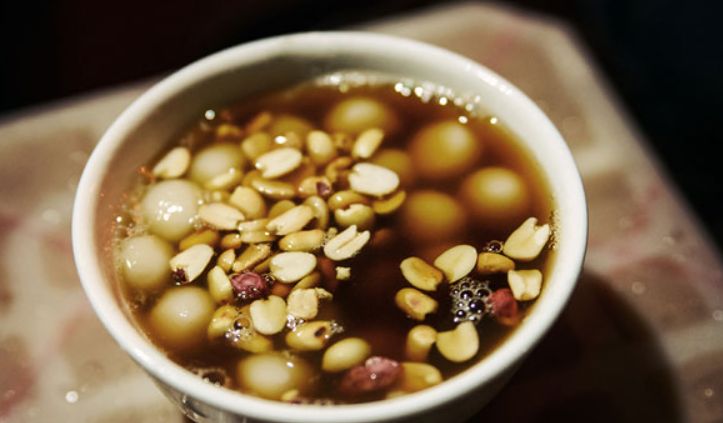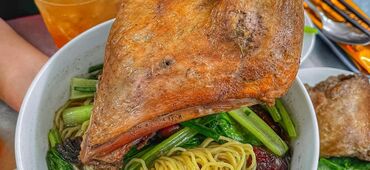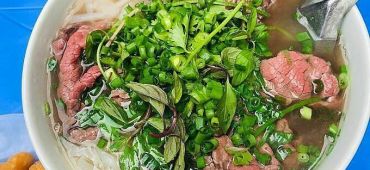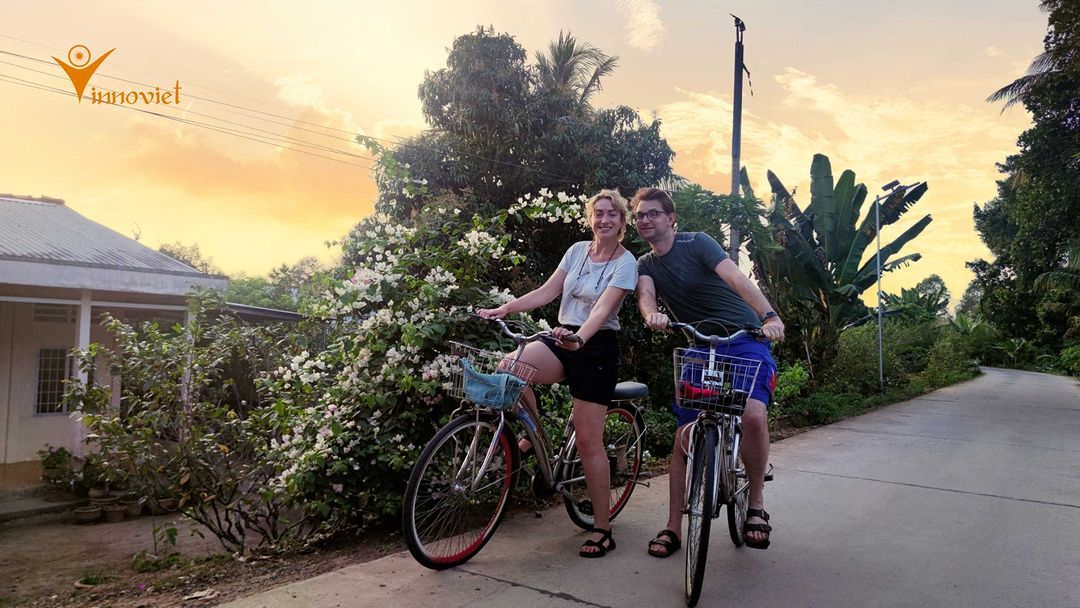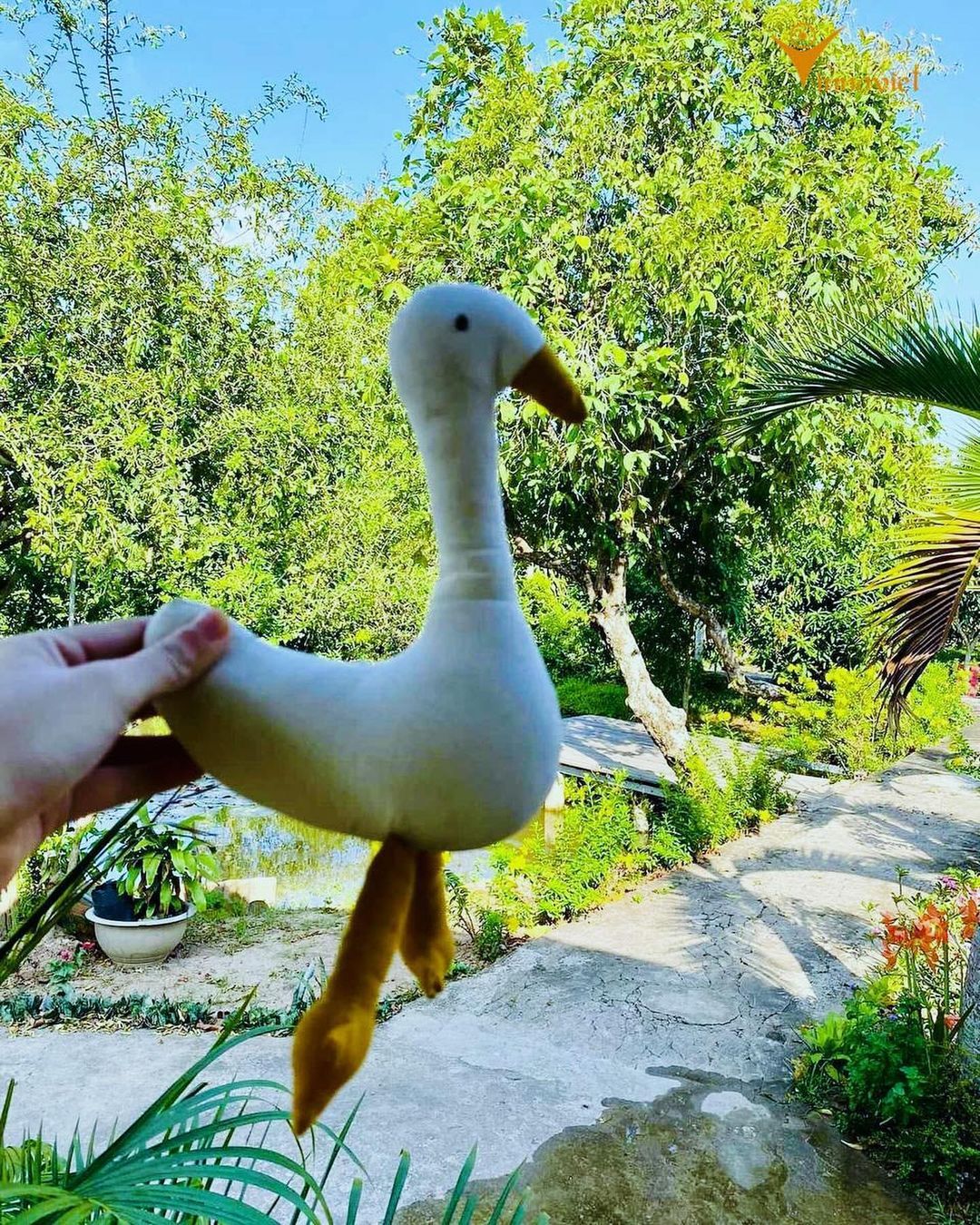Ha Giang, a region known for its breathtaking landscapes and rich culture, offers a culinary experience like no other. If you find yourself in this remarkable part of Vietnam, make sure not to miss the chance to savor its top 5 special dishes. These culinary delights are a testament to the unique flavors and traditions of the region. From the vibrant markets to the local eateries, Ha Giang's food scene is a culinary adventure waiting to be explored. So, when you visit Ha Giang, immerse yourself in its gastronomic treasures and discover the true essence of this captivating destination.
1 - Rice rolls with eggs
In the frigid, rocky expanse of Ha Giang, it becomes imperative to savor something remarkably warm, akin to the local air, in order to ward off the cold that permeates from the stones. Interestingly, Ha Giang's signature egg rolls, despite being a 'cold dish,' are thoughtfully complemented with a steaming bone broth, offering a delightful juxtaposition of temperatures and flavors.
As the flavors meld together, one can simply dip the tender rice paper, adorned with the vibrant hue of egg yolk, into the homemade sauce. This immersion results in an exquisite blend of tastes that perfectly capture the essence of this remote Ha Giang landscape.
Some places to enjoy Banh Cuon Trung:
- Banh Cuon Mrs Lan, address 116A Ly Tu Trong street, Ha Giang town.
- Banh Cuon shop, just across the old Dong Van market 
2 - Chau Au Tau (Au Tau porridge)
In Ha Giang, there are culinary treasures that etch unforgettable memories in the hearts of visitors, and one such gem is Bitter Porridge, locally known as Chao Au Tau. Especially during chilly winter nights in the charming town of Ha Giang, seeking solace at a quaint restaurant's corner and ordering a steaming bowl of Chao Au Tau becomes an experience worth cherishing.
This delectable dish encapsulates a symphony of flavors in a humble bowl of soup: fragrant glutinous rice, expertly cooked upland rice, the rich and buttery essence of Au bulb, simmered to perfection with tender pig trotters, and an array of fragrant herbs and spices. The visual appeal of a bowl of Chao Au Tau is equally captivating, as it harmoniously blends rice, minced meat, nourishing bone broth, and aromatic herbs. Crafting Chao Au Tau is an art; it involves immersing the Au bulb in robust rice water and slow-cooking it for a full 4 hours. Sticky rice from Hoa Vang, when combined with white rice infused with the essence of chopped pork leg and Au bulb, along with a dash of lean meat and a hint of spices, yields a porridge with a delightful bitterness, hence its moniker, "bitter porridge."
Many first-time visitors to Ha Giang who savor the delicious Chao Au Tau find themselves drawn back to it time and again. Beyond being a culinary delight, Chao Au Tau is also renowned for its ability to combat the cold, making it a go-to comfort food. While this extraordinary dish is available throughout the year in Ha Giang, it is primarily served in the evening. On those chilly winter nights amidst the mountains, sitting in a cozy restaurant with a roaring red flame kitchen, relishing a bowl of Au Tau Porridge becomes an enticing adventure for those who crave new culinary experiences.

3 - Thang Co
The cold winter air in Dong Van is filled with a tantalizing aroma, where the scents of cardamom, nuts, and lemongrass intermingle with the rich essence of meat. At the Dong Van market, H'mong men from all around eagerly gather to partake in a bowl of Thang Co soup and share a few rounds of wine with friends. It's a tradition that holds a special place in their hearts. For those fortunate enough to have many friends, the invitations to join different wine circles flow freely. Being the last one standing at the end of these spirited gatherings is considered a blessing, a testament to the bonds of friendship.
While the Dong Van market may have undergone renovations to resemble city markets, it still retains the unique character of its ethnic women, who dot the landscape with their traditional umbrellas. Amidst the market's hustle and bustle, the Thang Co stalls are tucked behind the food vendors. Here, pork, buffalo, and beef dangle from sturdy hooks, while adjacent wine shops house their potent concoctions in large plastic containers or ceramic jars, brought in by horseback either the night before or early in the morning. It's a world where the aroma of wines mingles with the fiery fragrance of hot leaves.
As is customary, H'mong people bring Men Men, a type of corn cake, to the market. They complement these with a couple of bottles of wine and a steaming bowl of Thang Co, creating an impromptu feast among friends. Savoring Thang Co is an intimate experience; diners squat around long wooden tables, each bowl served with a wooden spoon. A bowl of salt and fiery chili is always nearby, as even a pinch of salt can amplify the robust flavors of Thang Co. Sharing this dish with friends is not just about the food; it's an opportunity to discuss family, health, business, and life in general. Laughter and camaraderie echo through the market as the night progresses. As inhibitions fade, songs and flute music often fill the air, and the Thang Co table becomes a place where both men and women enjoy the warmth of companionship, and revel in the joy of the moment.

4 - Com Lam in Bac Me (Sticky rice cooked in bamboo pipe)
Ha Giang, a region known for its fertile land, boasts a delectable culinary treasure: Com Lam Bac Me, a special dish of the Tay ethnic people. The process of crafting Com Lam is relatively simple yet yields a delightful treat. It begins with the careful selection of sticky rice, which is thoroughly treated and soaked in water sourced from underground springs. The prepared rice is then placed inside bamboo tubes, which are sealed with banana leaves. These bamboo tubes, made from young bamboo, are open at one end and closed at the other, akin to the base of a cooking pot.
To prepare Com Lam, the glutinous rice, mixed with a pinch of salt, is meticulously washed and packed into the bamboo tubes. Water is poured over the rice until it covers the grains. The open end of the bamboo tube is sealed with dried banana leaves. The tubes are then placed over a fire or beneath burning wood. Slowly, the tubes are rotated to ensure even heating. In about an hour, or less depending on the tube's size, the tantalizing aroma of glutinous rice fills the air, signifying that the Com Lam is ready.
Before indulging in this delicacy, a knife is used to peel away the outer layer of burnt banana leaves, revealing the Com Lam in its tube-like form. It is enclosed by a creamy ivory shell of bamboo. Interestingly, in the past, Com Lam was considered a priority food for pregnant women and nursing mothers. Scientifically, it was believed that consuming Com Lam would help avoid any potential adverse effects from copper, iron, or aluminum that might leach into the food when cooked in metal pans. This, in turn, was believed to have a positive impact on the quality of a mother's milk.
Savoring Com Lam is a sensory experience that encompasses not only the delectable taste but also the aroma of grilled bamboo and banana leaves. It can be enjoyed on its own or paired with sesame seeds or freshly grilled river fish, offering a diverse range of flavors to please the palate.

5 - Reu Nuong (grilled moss)
In Xuan Giang commune, Quang Binh district, stone moss takes on a unique significance for the Tay people. While moss, traditionally considered an aquatic plant, has been used in various ways, for the Tay community, it transforms into a special dish known as "Que." This culinary gem is celebrated for its exceptional taste and nutritional value, offering a truly distinctive flavor profile.
Locals share that when they embark on moss-gathering expeditions, they typically head to vast fields where this delectable moss thrives in abundance. To prepare it for consumption, the moss undergoes a thorough washing process to remove any traces of sand, ensuring its purity. Subsequently, this moss becomes the key ingredient for a range of delectable dishes.
It's worth noting that not all moss is created equal; the moss sourced from streams, while plentiful, tends to be less flavorsome. Furthermore, moss is a seasonal delicacy, rendering it all the more precious to the people of this region. They prepare moss in various ways, including frying and drying. However, the most coveted and original method involves grilling it with an array of aromatic spices.
For the Tay people, there's a saying: "Que chi ap, tap chi ho," which emphasizes the importance of grilling moss over charcoal. During the grilling process, they avoid flipping the moss bag but instead focus on cooking one side and then the other. To determine its readiness, they gently tap the moss bag with two fingers; if it feels soft inside, the moss is deemed perfectly grilled.
Given the seasonal nature of moss, locals also employ a preservation method by drying it and storing it in their kitchens for future use. It's worth mentioning that dried moss is a rare treat, typically reserved for esteemed guests, highlighting its significance in the Tay community's culinary traditions.
.
In summary, Innoviet highly recommends trying the unique dishes of Ha Giang when you embark on your trip. Vietnamese cuisine is celebrated for its diversity, bursting with vibrant flavors and delicious offerings. Each region of Vietnam boasts its own special culinary delights, making it an essential part of any visit to Ha Giang to savor the dishes that Innoviet suggests.
When you plan your visit to Vietnam and require assistance with trip planning or are in search of distinctive tourism experiences, particularly in Ho Chi Minh City or the Mekong Delta, do not hesitate to get in touch with Innoviet. They specialize in crafting innovative tour programs that immerse you in the local lifestyle, offer friendly and well-organized operations, and tailor tours to suit the needs of groups or families, allowing you to explore the beauty of Vietnam over multiple days.
JOIN OUR FACEBOOK GROUP HERE to learn our tips as well as discuss them before going to these locations.

